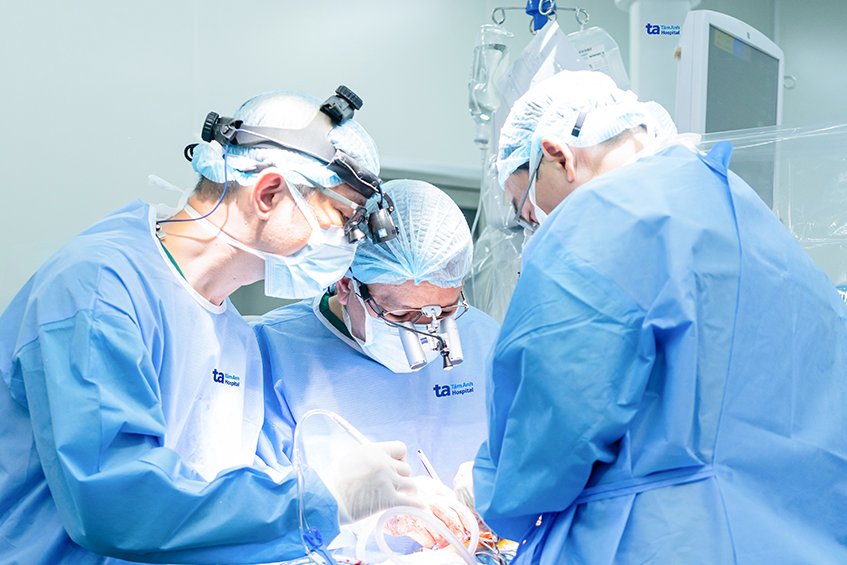Mr. Man first experienced symptoms of coronary artery disease, such as chest pressure and tightness, over two years ago. Doctors recommended surgery, but due to his advanced age, stage 3 chronic kidney disease, and weakened condition, he opted for medication. Over the past month, his chest pains intensified, accompanied by shortness of breath. The pain radiated to his neck, jaw, shoulders, and back, subsiding only when he rested or took nitrate medication. Suspecting a heart attack, he sought treatment at Tam Anh General Hospital in Ho Chi Minh City.
Dr. Huynh Hoang Khang, Head of Cardiothoracic Surgery at the Interventional Cardiology Center, reported that Mr. Man had complete blockages in his left anterior descending artery and right coronary artery, with a 90% blockage in the left circumflex artery. His heart muscle was receiving blood supply from only 10% of the left circumflex artery, leading to damage. Since he hadn't yet experienced a heart attack, his heart function remained relatively good, and his heart valves were functioning normally. However, prompt treatment was necessary to prevent life-threatening complications.
Due to the complex nature of Mr. Man's blockages, with significant calcification in his coronary arteries, he wasn't a suitable candidate for interventional cardiology procedures like stenting. Given his severe kidney disease, doctors determined that the use of contrast dye required for stenting could further worsen his kidney condition. After consultation, the medical team opted for off-pump coronary artery bypass surgery.
 |
Doctors performing bypass surgery to clear blocked arteries. Photo: Thanh Luan |
In this procedure, a healthy blood vessel is grafted from another part of the body (typically the chest wall, arm, or leg) to create a detour around the blocked section of the artery, restoring blood flow. Surgeons can graft two, three, or even four bypasses to address multiple blockages.
The surgery lasted over 5 hours. Without the use of a heart-lung machine, doctors successfully created three bypasses for the three affected arteries. This advanced technique is particularly suitable for elderly patients with chronic kidney disease and calcified coronary arteries, like Mr. Man. He recovered quickly, was extubated soon after the procedure, resumed a normal diet within a day, and was discharged from the hospital after a week.
Dr. Khang explained that there are two main methods for coronary artery bypass surgery: on-pump, using a heart-lung machine, and off-pump. Off-pump surgery offers several advantages, including continuous blood flow to the heart and reduced risk of side effects associated with the heart-lung machine, such as inflammation and hemolysis. However, off-pump surgery requires highly skilled surgeons, as hemodynamics can be affected when positioning the heart to expose the grafting site.
Dr. Khang emphasized that coronary artery disease is a dangerous cardiovascular condition that is on the rise and a common cause of death. It occurs when plaque buildup narrows or blocks the major arteries supplying blood to the heart, reducing blood flow. There are two forms of the disease: acute coronary syndrome and chronic coronary artery disease.
Acute coronary syndrome manifests as unstable angina or acute myocardial infarction (heart attack), occurring when a coronary artery becomes completely and suddenly blocked due to plaque rupture or thrombosis. In contrast, chronic coronary artery disease, as in Mr. Man's case, often progresses silently for years. Symptoms gradually worsen as the blockages increase over time. Severe chest pain and shortness of breath indicate significant blockages in all three main coronary arteries, potentially leading to complications like heart attack or sudden death if not treated promptly.
Thu Ha
*The patient's name has been changed.
| Readers can submit questions about cardiovascular diseases here for doctor's answers. |












